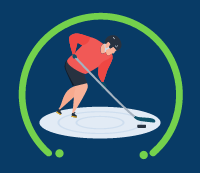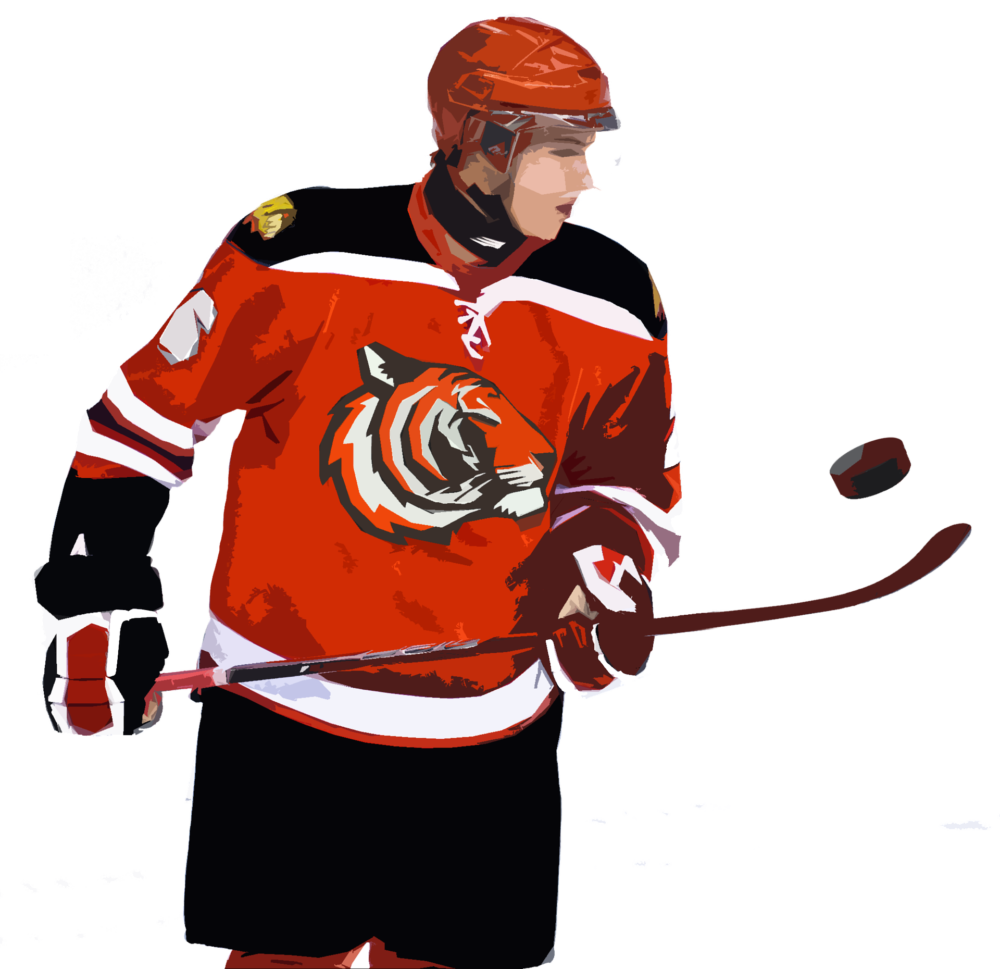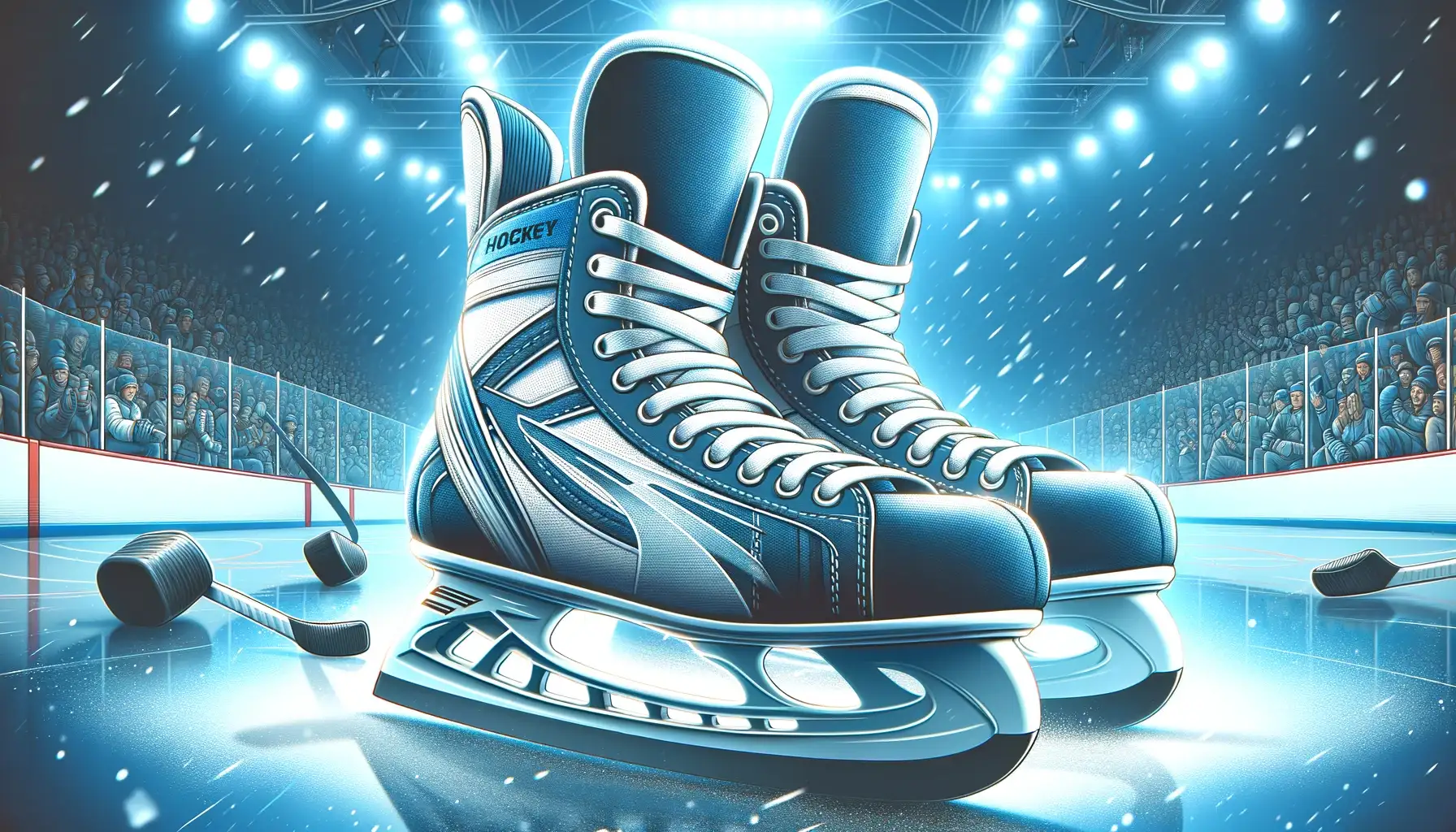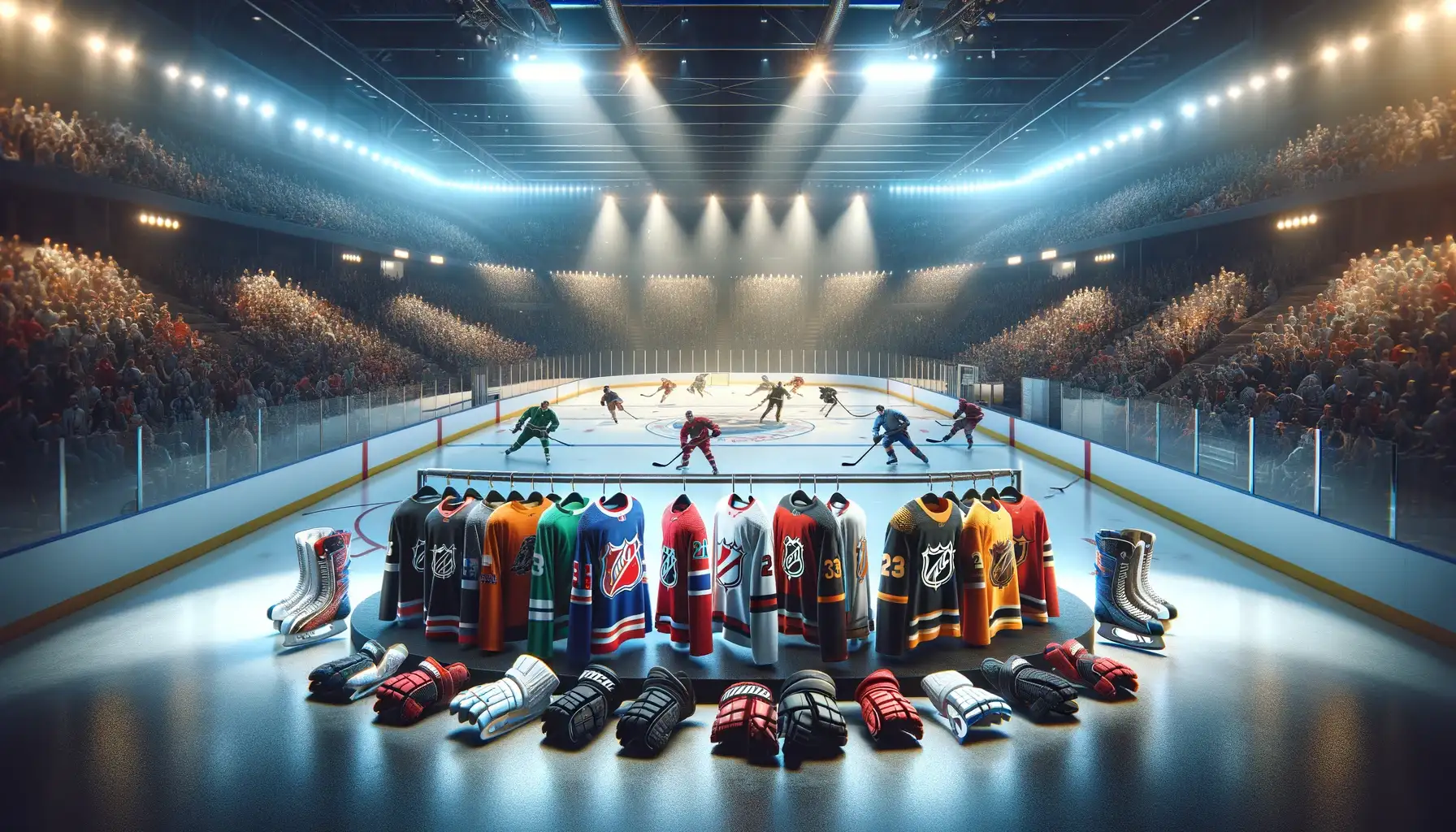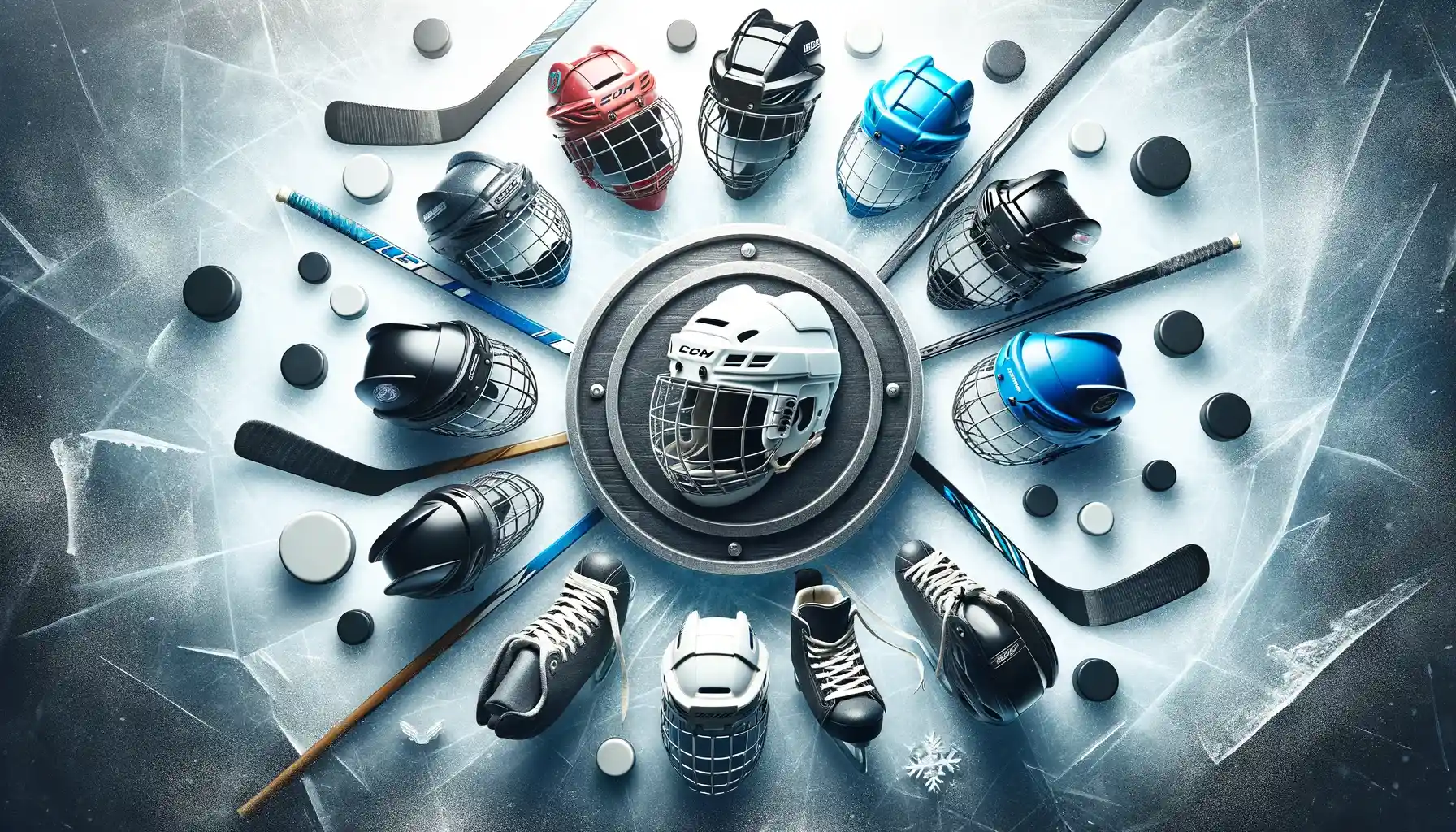Choosing between hockey and figure skates isn’t just a matter of looks — it’s about performance, comfort, and purpose. Whether you’re learning to skate, diving into hockey, or exploring figure skating, understanding the differences can help you find the right fit.
Let’s break down the basics, starting with the structure of each skate and what sets hockey skates apart.
Key Takeaways
- Blade Design & Edge Profile: Hockey skates have shorter, curved blades with deeper hollows for agility and quick turns, while figure skates use longer, flatter blades with toe picks for control in jumps and spins.
- Boot Construction & Fit: Hockey boots are rigid and lower cut for speed and protection; figure skate boots are stiffer at the ankle and typically leather for balance and support in technical moves.
- Performance Suitability: Hockey skates prioritize acceleration and maneuverability; figure skates are designed for artistic routines requiring stability, balance, and precision.
- Material & Maintenance: Hockey skates feature synthetic, heat-moldable materials and removable blades; figure skates often require blade mounting, leather care, and softer padding for nuanced control.
- Break-In & Sharpening Differences: Hockey skates break in faster and require deeper sharpening hollows; figure skates take longer to mold and need cautious sharpening around the toe pick.
- Skill & Sport Alignment: Hockey skates suit fast-paced, competitive play; figure skates are ideal for spins, dance, and choreographed elements. Choose based on your sport and goals.
- Beginner Tips & Balance: Figure skates offer more surface stability but may cause tripping from the toe pick. Hockey skates demand stronger balance but reward with agility.
- Recreational Options: Hybrid or soft boot recreational skates (like K2s) offer a balance of stability and comfort for casual or adult learners not pursuing a specific sport.
- Safety & Fit First: Regardless of type, proper fit, support, lacing technique, and protective gear—like helmets—are essential for skating safely and confidently.
Anatomy of a Skate: What Makes Each Type Unique
At a glance, hockey and figure skates might seem similar. But each is built for specific movement, technique, and support on the ice.
Boot
The boot houses your foot and determines comfort, control, and ankle support. Figure skates tend to be higher-cut for balance and stability, while hockey boots are built for lateral agility and protection.
Blade
This is where form meets function. Hockey blades are shorter and curved (rockered) for quick turns and bursts of speed. Figure skate blades are longer and flatter, ideal for stability and edge control during spins and jumps.
Toe Pick
Found only on figure skates, the toe pick is a jagged edge at the front of the blade. It helps skaters launch into jumps or pivot sharply — but it can also cause trips for those unfamiliar with its use.
Blade Sharpening: Hockey vs. Figure Skates
While both hockey and figure skates need sharp blades to perform at their best, the sharpening process — and the results it produces — differs significantly between the two.
Radius of Hollow (ROH)
The radius of hollow is the concave groove ground into the bottom of a skate blade. It determines how much grip (bite) versus glide the skate will offer:
-
Hockey skates usually have a deeper hollow (e.g., 1/2″ to 5/8″), giving skaters more edge control for quick turns, stops, and explosive acceleration.
-
Figure skates typically have a shallower hollow (e.g., 7/16″ to 7/8″) for smooth gliding and controlled edge work, crucial for spins and transitions.
Sharpening Frequency
Because hockey involves more stops and direction changes, hockey skaters often sharpen their blades every 6–10 hours of ice time. Figure skaters may go longer between sharpenings — roughly every 15–20 hours, depending on their routines and ice conditions.
Toe Pick Considerations
Figure skate toe picks must never be ground down during sharpening. It’s essential to find a sharpener experienced in figure skates, as damage to the toe pick can ruin technique or balance. Conversely, hockey skate blades have no toe pick, but require consistent edge balance for performance.
Pro Tip: Always ask your sharpener for the exact ROH you’re using. New skaters should start with a neutral hollow (around 5/8″) and adjust based on feel and feedback.
Comparing the Key Differences Between Hockey Skates and Figure Skates
Now, let’s take a closer look at hockey skates specifically — from their construction to how they perform on the rink.
| Feature | Hockey Skates | Figure Skates |
|---|---|---|
| Blade Design | Shorter, curved for quick turns | Longer, flatter with toe pick for jumps/spins |
| Boot Structure | Rigid, lower cut, synthetic materials | Stiffer leather, higher ankle support |
| Weight | Lighter for speed and agility | Heavier for stability and control |
| Toe Pick | Absent | Present, essential for advanced moves |
| Use Case | Hockey, fast turns, impact protection | Figure skating, spins, choreography |
Sizing, Fit & Break-In Differences
Getting the right fit is just as important as choosing the right type of skate — and hockey vs. figure skates follow different sizing systems and break-in processes.
Skate Sizing Basics
-
Hockey skates usually run 1 to 1.5 sizes smaller than your street shoe size. A snug fit is preferred for better control and energy transfer.
-
Figure skates often run closer to street size, but fit can vary more depending on brand and custom boot type.
A properly fitted skate should feel tight without causing pain — your heel shouldn’t lift, and your toes shouldn’t curl.
Break-In Period
-
Hockey skates often feature thermoformable materials, meaning they can be heat-molded for a custom fit. After molding, they usually break in within 5–10 skates.
-
Figure skates have a longer break-in due to their stiff leather construction, especially in advanced-level boots. It may take 10–20+ hours of skating to fully mold them to your foot.
Tip: If you’re switching skate types, be prepared for a different pressure distribution. Figure skates support higher up the ankle, while hockey skates focus on flexibility and ankle bend.
What Makes Hockey Skates Unique?
Hockey skates are purpose-built for the speed, power, and unpredictability of a competitive game. Every component — from the boot to the blade holder — is designed to support performance and protect the player.
1. Structure of hockey skates: Hockey skates are made for action, just like the game itself. The rigid boot provides ankle support and protection from collisions, while the curved, shorter blade allows for swift maneuverability.
| Part | Description |
|---|---|
| Boot | Made from thermoformable or synthetic materials for a snug, protective fit |
| Blade | Stainless steel, curved for acceleration, balance, and sharp turning |
| Holder | Connects the blade to the boot, allowing energy transfer |
| Toe Cap | Hard outer shell protecting the front of the foot |
| Quarter Package | Wraps from toe to heel, providing structure and ankle support |
| Tendon Guard | Protects Achilles tendon while allowing flex |
| Tongue | Cushioned to protect against lace bite and impact |
| Liner | Wicks away sweat, adds comfort |
| Footbed | Offers arch support and helps with edge control |
| Outsole | Base that connects boot to blade, critical for power transfer |
2. Materials commonly used: Hockey skates are often made from durable synthetic materials like plastic and nylon. The boot is designed to withstand rough impacts, whether it’s from a speeding puck or a collision with another player’s skate.
| Material | Characteristics | Advantages |
|---|---|---|
| Fiberglass | Lightweight and durable | Good blend of flex and support |
| Carbon Fiber | Extremely strong and light | Top-end stiffness and power transfer |
| Thermoformable Plastics | Moldable to individual feet | Custom comfort and fit |
| Stainless Steel (Blade) | Holds edge longer | Enhanced glide, agility, and performance |
Why Skaters Choose Hockey Skates?
-
Impact Protection
Engineered for collisions, hockey skates shield your feet from pucks, sticks, and hard falls. -
Agility & Maneuverability
The rocker curve enables tight turns, fast stops, and explosive lateral movements. - Lighter Weight
Compared to figure skates, hockey skates are more lightweight, reducing fatigue over long sessions.
Performance on the Ice
Hockey skates prioritize explosive power, sharp cuts, and quick transitions — key for both offense and defense. Whether you’re charging the net or skating backward to block a pass, the design supports fast, responsive movement.
In the next section, we’ll switch gears and explore the structure and advantages of figure skates — and why they’re often recommended for beginners and technical skaters.
To provide a clear comparison of the materials used in hockey and figure skates, let’s take a look at the table below.
| Material Categories | Hockey Skates | Figure Skates |
|---|---|---|
| Boot Construction | Synthetic Material (Plastic, etc.) | Leather |
| Blade Construction | Stainless Steel | Stainless Steel |
| Blade Holder | Plastic | Metal |
| Inner Lining | Foam padding for comfort & protection | Light padding for flexibility |
Figure Skates: Built for Precision and Artistry
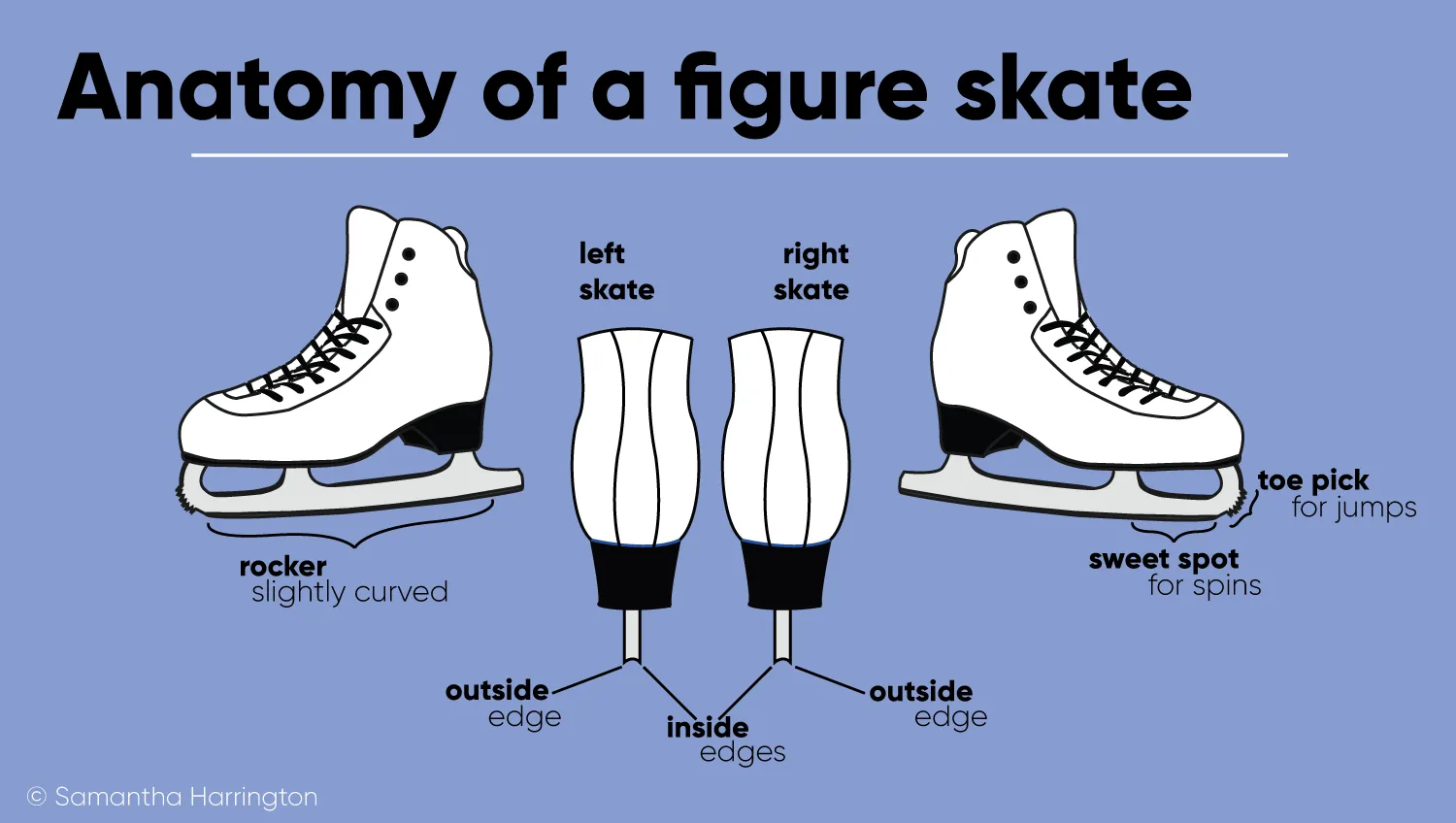
Figure skates are designed to prioritize balance, control, and elegance — everything needed for intricate footwork, spins, and jumps. Their structure caters to the unique demands of figure skating.
Anatomy of a Figure Skate
-
Blade: Longer and flatter than hockey blades, offering more stability for spins and graceful edge work. Includes a toe pick, a jagged front edge used for jumps and pivots.
-
Boot: Typically made of leather or high-grade composites. Stiff enough for ankle support but pliable enough for flexibility during landings and dance movements.
Advantages of Figure Skates
-
Stability and Balance: Ideal for learning edge control and executing precise movements.
-
Toe Pick Utility: Enables advanced maneuvers like toe jumps and pivots. Some beginners find it helpful for pushing off — others may trip if not used properly.
-
Flexibility in Movement: Supports a wide range of motion for spirals, spins, and footwork sequences.
Comparative Advantages of Hockey Skates and Figure Skates
| Feature | Hockey Skates | Figure Skates |
|---|---|---|
| Speed | High | Moderate |
| Agility | High | Moderate |
| Jumping Capability | Low | High |
| Control & Precision | Moderate | High |
| Protection | High | Moderate |
| Graceful Movement | Limited | Excellent |
Choosing the Right Skates for Beginners
If you’re new to ice skating, choosing the right pair is about comfort, safety, and intended use.
Hockey Skates vs Figure Skates for Learning
-
Figure Skates: Longer blades provide more stability. However, the toe pick may lead to accidental trips if not accounted for.
-
Hockey Skates: Easier to maneuver due to the curved blade. May feel less stable initially, especially for those still developing balance.
“Figure skates give you a warning if you are about to go too far forward or back. Hockey skates there is no such warning.” – Reddit user Socrates84
Considerations Before Switching Skate Types
Many Reddit users mention that transitioning from one type to another can feel like starting over — but it doesn’t last long. As one shared:
“Switching to hockey skates felt like day 1 for about a half hour. Didn’t take long to get used to them… a few hours in and I didn’t want to go back.” – u/Otherwise_Arm7773
Others highlight that knee bend and balance matter more than blade type during the transition.
Tips for Beginners
-
Choose based on the discipline you’re interested in: jumps and choreography? Go with figure skates. Fast-paced movement and agility? Opt for hockey skates.
-
Consider recreational skates like K2s if you’re skating casually. They offer a blend of both blade types with added comfort.
-
If balance is still improving, wear a helmet (with a cage if needed) — regardless of skate type.
Transitioning Between Skate Types: What to Expect
Switching from figure skates to hockey skates (or vice versa) can feel awkward at first — but it’s totally doable with patience and proper expectations.
From Figure Skates to Hockey Skates
-
Balance feels different: Figure skates have a longer blade and toe pick that help catch imbalances early. Hockey blades are shorter and more curved, which can feel unstable at first.
-
Toe pick habits linger: Many beginners find themselves pitching forward when they lose that toe-pick “warning.”
-
Agility improves fast: After a short adjustment period, most users report significantly improved speed and maneuverability in hockey skates.
“I remember the first time I tried hockey skates — I was all over the place. But the agility and speed you can get in them is incredible.”
– Reddit user u/LabMonkeyBiker
From Hockey Skates to Figure Skates
-
Toe pick awareness is key: It’s easy to trip if you’re not used to the toe pick. Many skaters need to relearn balance and avoid leaning too far forward.
-
Better balance for some skills: The longer blade offers more surface contact with the ice — helpful for spins, glides, and dance movements.
“If you’re constantly catching your toe pick, you’re probably not bending your knees enough. That adjustment matters for both skate styles.”
– Reddit user u/twinnedcalcite
Should You Start with Your End Goal?
Many Reddit skaters recommend starting with the skates you eventually want to master. While it’s possible to switch later, it might mean relearning certain basics — particularly edge control and balance posture.
“Go straight to hockey skates if that’s your plan in the long run. You’ll get used to them fast.”
– Reddit user u/AdoomBeans
Selecting the right type of skates is only the beginning of your journey. Discover the leading names in the industry by exploring our Top Hockey Brands, and delve into our comprehensive guide to Hockey Skate Brands. Once you’ve narrowed down your choices, ensure you make the best purchase with our detailed guide on How to Buy Hockey Skates, covering essential tips for selecting the right pair.
Blade Mounting, Maintenance & Skate Care
Skates aren’t just performance tools — they’re an investment. Understanding how hockey and figure skates differ in setup and upkeep can extend their lifespan and performance.
Blade Mounting
-
Hockey skates come with factory-mounted blades attached to the plastic holder. Some high-end models allow removable runners that can be swapped or upgraded.
-
Figure skates, especially at intermediate and advanced levels, are often sold as separate boots and blades. Skilled technicians manually mount the blades to ensure alignment and balance.
Proper mounting is critical for figure skaters — a misaligned blade can throw off spins, edges, and landings.
Long-Term Maintenance
-
Figure skates require leather conditioning, especially for traditional boots, to keep them from drying and cracking.
-
Hockey skates need regular drying, especially around the inner liner and footbed, to prevent bacteria buildup and smell.
For both types:
-
Use blade guards when walking off-ice.
-
Wipe blades with a towel after each session to prevent rust.
-
Avoid leaving skates in a zipped bag or car trunk — moisture buildup can destroy the boot and blades over time.
Storage Best Practices
-
Loosen laces after skating to allow air circulation.
-
Use soakers (soft blade covers) — not hard guards — for storage.
-
Store skates in a ventilated area at room temperature.
A well-maintained pair of skates not only lasts longer but protects your ankles, knees, and posture on the ice.
Frequently Asked Questions
Are hockey skates easier than figure skates?
They can be for quick turns and speed. But figure skates may feel more stable due to their longer blade.
Are hockey skates harder for balance?
Slightly — especially at first. The absence of a toe pick means less forward-back warning.
Can I start with figure skates and switch later?
Yes, but be prepared for an adjustment period. Many skaters switch comfortably with time.
Are recreational skates a good option?
For casual skaters, yes. K2 soft boots, for example, provide stability and comfort without committing to one discipline.
Skill Level & Biomechanics: Matching the Right Skate to the Right Skater
Choosing between hockey and figure skates isn’t just about sport preference — your skill level, foot anatomy, and physical condition all play a role in long-term comfort and progress.
Beginners: Start with Stability
-
Figure skates are often recommended for first-timers due to their longer blade and greater surface area, which provides more balance.
-
Toe picks, however, can be a tripping hazard unless you’re taught proper form early.
-
Hockey skates offer more agility but require better core balance from the start.
Tip: New skaters who struggle with balance — especially adults — may benefit from recreational skates (like K2s), which combine comfort with stability.
Intermediate to Advanced Skaters
-
Aspiring hockey players will want to switch to hockey skates as early as possible to adapt to their tighter turning radius and speed capabilities.
-
Figure skaters should stick with proper boots from the start to build confidence in edge work, spins, and jumps.
Biomechanics and Foot Type
-
Skaters with pronation (flat feet) or supination (high arches) may need custom insoles or a boot with the right stiffness.
-
Ankle flexibility also matters — stiff boots (common in figure skates) are great for support but can restrict mobility for those with limited range of motion.
Pro tip: Try both types of skates at a rink or rental shop. Comfort, not just style, should guide your final decision.
Enhancing our understanding of the differences between hockey skates and figure skates, the following YouTube video provides an insightful visual comparison and expert analysis.
Final Thoughts: There’s No Wrong Choice
Both figure skates and hockey skates are purpose-built for very different kinds of movement — but either can be a great starting point.
Whether you’re carving arcs with toe picks or sprinting across the rink in hockey boots, the right skates are the ones that match your goals, skill level, and comfort needs. Don’t be afraid to try both before committing — skating should feel intuitive and enjoyable.
For further reading and to explore more details on the subject, we recommend the following resources
